The Kamakura Period and the Spread of Zen Buddhism: The Birth and Development of Matcha Culture
In Japanese history, matcha culture has developed as a culture with deep spirituality that goes beyond simply enjoying a beverage. The Kamakura period in particular was an important time when the foundation of matcha culture that continues to the present day was formed. Along with the spread of Zen Buddhism, matcha established its unique position within Japanese culture.
Priest Eisai and the Introduction of Tea
The development of matcha culture in Japan dates back to the early Kamakura period. In 1191, when Zen priest Eisai (1141-1215) returned from Song Dynasty China, he brought back tea seeds, which is considered the origin of Japanese matcha culture. Eisai authored “Kissa Yojoki” (Drinking Tea for Health), which described in detail the medicinal effects and methods of drinking tea. This book is known as Japan’s oldest tea document, indicating that tea at that time was not merely a luxury item but an important drink for health and spiritual cultivation.
The Connection Between Zen Buddhism and Tea
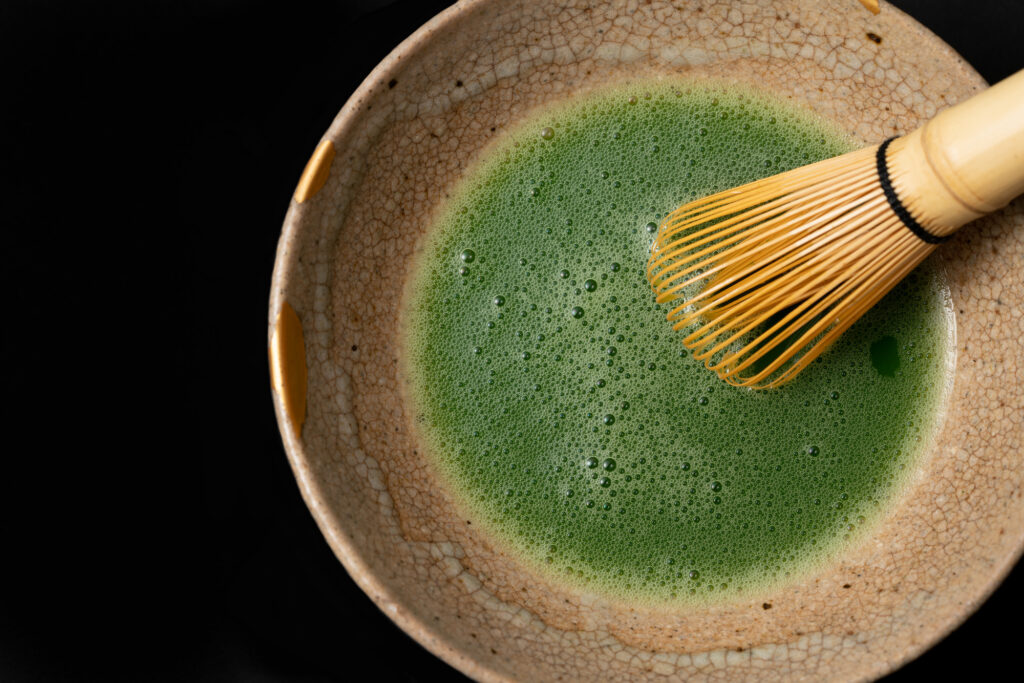
The Kamakura period (1185-1333) was a time when Zen Buddhism was fully introduced from China along with the rise of samurai society. Zen monks had the habit of drinking tea to ward off drowsiness during long periods of zazen meditation. Particularly in Rinzai and Soto Zen temples, a ceremony called “Sarei” was performed to offer tea before Buddha, which became the spiritual foundation for the later Tea Ceremony (Chado).
The aesthetic sense of Zen thought, such as “Ichigo Ichie” (one-time encounter) and “Wabi-Sabi” (finding beauty in imperfection and impermanence), became deeply connected with the spirit of the tea ceremony, forming Japan’s unique matcha culture. In influential Zen temples in Kamakura such as Kenchoji and Engakuji, the authentic way of preparing matcha was transmitted by Zen monks invited from China.
The Popularity of “Tocha” (Tea Contests)
From the middle to late Kamakura period, a game called “Tocha,” which involved guessing the origin and quality of tea, became popular among nobles and samurai. Participants compared multiple teas and competed in their ability to identify genuine high-quality tea. Sometimes high-stakes bets were placed, and it played an important role as a social venue.
This culture of Tocha cultivated a discerning eye for tea quality, leading to the tradition of “Mekiki” (connoisseurship) in later tea ceremony. The connection between Zen and tea in the Kamakura period became an important element in forming the foundation of Japanese culture, continuing to have a profound influence on our matcha culture to this day.
The Origins of Matcha in the Kamakura Period and Its Deep Connection with Zen Buddhism
The Encounter of Zen Buddhism and Matcha

The Kamakura period (1185-1333) was an important era when Japanese matcha culture truly blossomed. Zen priest Eisai (1141-1215), who returned from Song Dynasty China, brought back tea seeds along with Zen practice methods, which is considered the origin of matcha culture in Japan. Eisai authored “Kissa Yojoki” and spread knowledge about tea’s benefits and drinking methods. This book is known as Japan’s oldest tea document and left the famous saying, “Tea is a miraculous medicine for health maintenance.”
Tea Ceremonies in Zen Temples
In Kamakura period Zen temples, a ceremony called “Kucha” was performed to offer tea before Buddha. Monks drank tea to stay awake during long zazen meditation sessions, and this gradually developed into a ceremony called “Sarei” among monks. Tea ceremonies based on practices transmitted from China were actively performed particularly in Kamakura Zen temples such as Kenchoji and Engakuji.
Interestingly, matcha at that time was not whisked as it is today; instead, the mainstream method was “Sencha-ho,” where powdered tea ground with a stone mill was dissolved in hot water. This later developed into “Tencha-ho” (whisking method) during the Muromachi period.
Spread to the Samurai Class
Zen Buddhism was strongly supported by the samurai class of the Kamakura Shogunate, and consequently, tea culture also permeated the upper classes. Key figures of the Kamakura Shogunate, including Hojo Tokimune, incorporated Zen and tea as part of their spiritual training. According to historical records, tea gatherings began to be held in samurai residences during the late Kamakura period, and a game called “Tocha,” which involved guessing the origin and quality of tea, became popular.
The connection between Zen and tea established during this era, symbolized by the phrase “Chazen Ichimi” (tea and Zen are of one taste), became the foundation of the Japanese tea ceremony spirit. The spirituality of the tea ceremony, such as “Ichigo Ichie” and “Wakei Seijaku,” was strongly influenced by Zen thought.
The matcha culture that sprouted in the Kamakura period was later inherited by Murata Juko, Takeno Joo, and Sen no Rikyu in the Muromachi period, developing into the Japanese tea ceremony that continues to the present day.
The Historical Significance of Eisai’s Tea Seeds and “Kissa Yojoki”
The Revolutionary Influence of Zen Priest Eisai and “Kissa Yojoki”
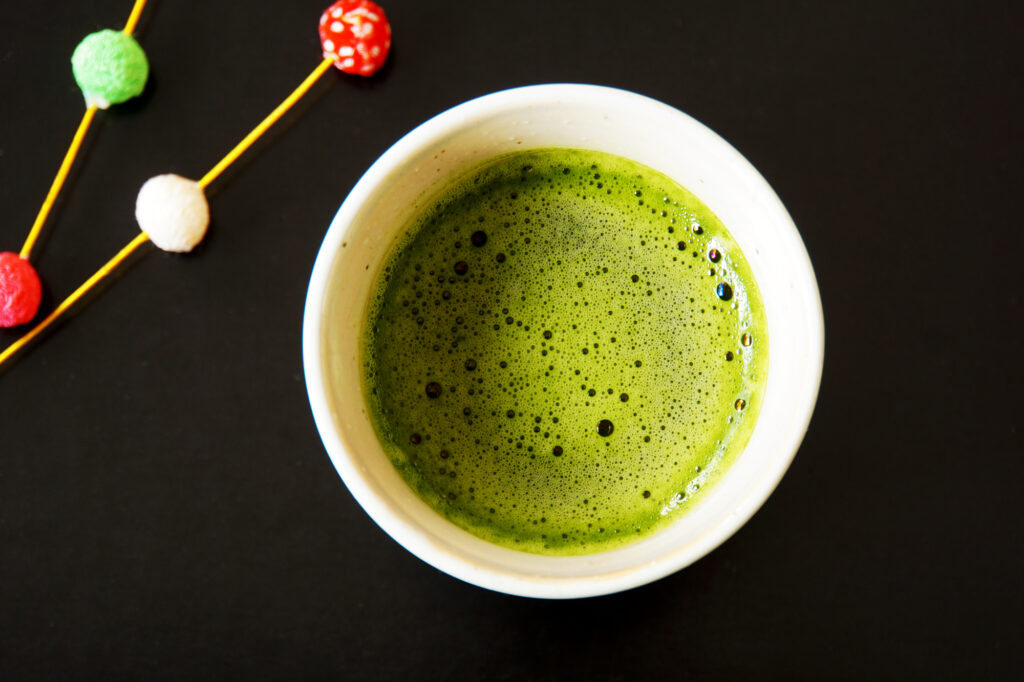
When discussing Japanese matcha culture, the presence of Zen priest Eisai (1141-1215), known as the founder of the Rinzai sect, is indispensable. After two voyages to Song Dynasty (present-day China), Eisai brought back tea seeds in 1191. These seeds would have an immeasurable influence on Japan’s later matcha culture.
The places where Eisai is said to have planted tea seeds are Mt. Seburi in present-day Fukuoka Prefecture and Togano-o in Kyoto Prefecture. Togano-o in particular later developed into one of Japan’s premium matcha producing regions.
“Kissa Yojoki” – Japan’s First Tea Book
One of Eisai’s most important achievements was authoring “Kissa Yojoki” in 1211. This was Japan’s first specialized book on tea and a groundbreaking document that detailed the medicinal effects and methods of drinking tea.
In this book, Eisai stated, “Tea is a miraculous medicine for health maintenance and a marvelous technique for longevity,” emphasizing the health benefits of tea. It is remarkable that the effects of catechins and L-theanine in matcha, which have been proven by modern research, were already recognized more than 800 years ago.
Contents of “Kissa Yojoki”:
- Medicinal effects and benefits of tea
- Tea cultivation methods
- Tea drinking methods
- Relationship with physical and mental health
The Inseparable Relationship Between Tea and Zen Buddhism in the Kamakura Period
The Rinzai sect and tea culture spread by Eisai were also accepted by the samurai class of the Kamakura period. The Zen teaching of “Ichigo Ichie” became the fundamental philosophy of the tea ceremony, leading to the attitude of “putting one’s whole spirit into a bowl of tea.”

Archaeological excavations have also unearthed many tea utensils such as tea bowls and tea containers from Kamakura period Zen temples, proving the close relationship between Zen Buddhism and tea. Particularly in influential Zen temples in Kamakura such as Kenchoji and Engakuji, authentic ways of preparing matcha were transmitted through monks who came from China.
The tea seeds and “Kissa Yojoki” brought by Zen priest Eisai established the foundation of the tea ceremony not merely as a beverage but as a spiritual culture, having an immeasurable influence on later Japanese culture. This is the origin of the matcha culture we enjoy today.
The Development of Tea Ceremonies in Zen Temples and the Spirituality of Matcha
Tea Ceremonies as Zen Practice
In the Kamakura period, tea ceremonies (Sarei) performed in Zen temples went beyond the mere provision of a beverage and took on deep spirituality as part of practice. The idea of “Tea is a miraculous medicine for health maintenance” expounded by Eisai in “Kissa Yojoki” was developed in a practical form in Zen temples. Through the series of actions of preparing matcha, Zen monks embodied the spirit of “Ichigo Ichie” (one-time encounter) and found opportunities for spiritual concentration within their daily lives.
Ritualization of Buddha Offerings and Tea Ceremonies
By the middle of the Kamakura period, tea ceremonies in Zen temples had developed into two major forms. One was called “Butsuzen Kucha,” a ceremony to offer tea to Buddha and patriarchs. The other was “Sarei,” a ceremony for sharing tea among monks. Particularly in the Five Mountains of Kamakura, including Kenchoji and Engakuji, they refined ceremonies transmitted from China and established uniquely Japanese practices.
According to research, the method of whisking matcha using a bamboo whisk (chasen) was established in these tea ceremonies, which became the foundation of later tea ceremony. From excavated tea bowls and documentary materials, it has become clear that by the late 13th century, the prototype of practices connected to the modern tea ceremony had already been formed.
The Budding of the “Wakei Seijaku” Spirit
The tea ceremonies in Zen temples already embodied the spirit of “Wakei Seijaku” (harmony, respect, purity, and tranquility), which is highly valued in later tea ceremony. “Wa” means harmony, “Kei” means respect, “Sei” means purity, and “Jaku” means tranquility, and these spiritualities were cultivated through matcha-centered practices.
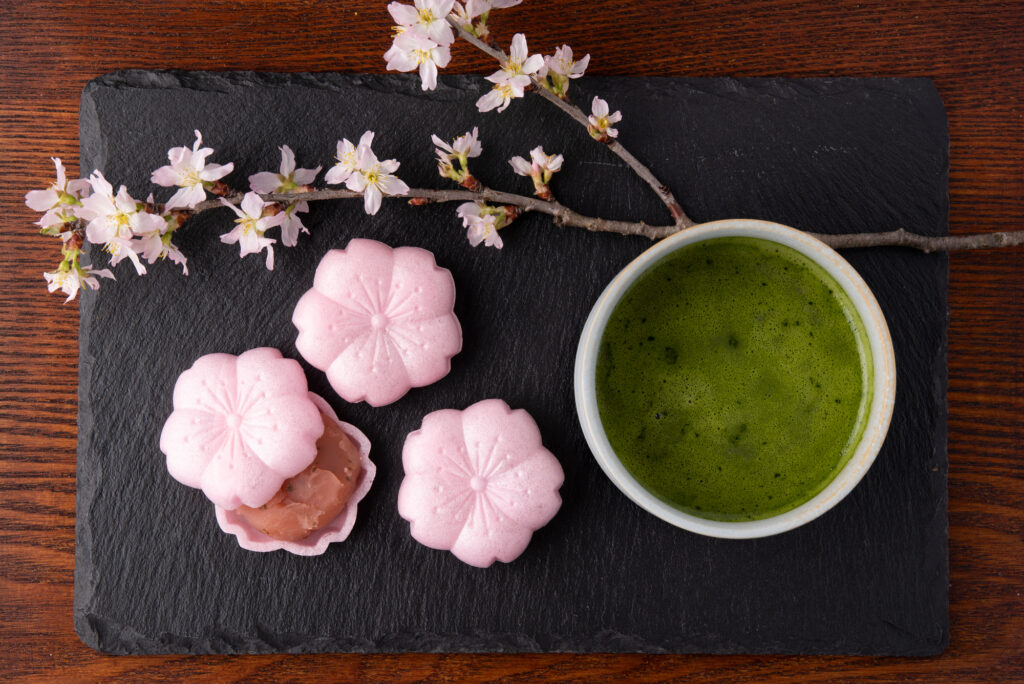
Particularly noteworthy are the “Shiki Shichisoku” (four rules and seven principles) established during this period, which regulated behavior in the tea room. These were seven principles that greatly influenced later tea ceremony. According to records by Kamakura period Zen monk Mugaku Sogen, each action in preparing tea sought a state of “Mushin” (no-mind), and at the moment of drinking matcha, they aimed for a state of mental unity called “Zenjo.”
Thus, matcha culture nurtured in Kamakura period Zen temples deepened not merely as a beverage but as a uniquely Japanese culture integrated with spiritual practice.
The Spread of Matcha Culture Centered on the Five Mountains of Kamakura and the Prototype of the Tea Ceremony
The Development of Matcha Culture Centered on the Five Mountains of Kamakura
As the influence of Zen Buddhism strengthened during the Kamakura period, matcha culture blossomed, particularly centered on the Five Mountains of Kamakura (Kenchoji, Engakuji, Jufukuji, Jochiji, and Jomyoji). In these temples, tea ceremony was incorporated as part of practice, and eventually, practices that became the prototype of the tea ceremony were formed. Particularly at Kenchoji, tea grown from seeds brought back by Eisai was cultivated, and tea appreciation gatherings called “Tocha” began to be held among monks.
From Tocha to Tea Ceremony
Tocha was not merely a game but a cultural activity deeply connected with Zen spirituality. Participants competed in their skill to identify the origin and quality of multiple teas, but through this process, the characteristics of tea leaves and preparation techniques were refined. The historical book “Azuma Kagami” contains records of Hojo Tokiyori, the regent of the Kamakura Shogunate, hosting a Tocha gathering in 1256, indicating that matcha culture had also permeated samurai society.
Formation of the Philosophical Foundation of “Wabi Tea”
Zen monks of the Five Mountains of Kamakura incorporated aesthetic sensibilities such as “Wabi” and “Sabi” into the tea ceremony. The Zen thought of finding deep beauty in simplicity became the philosophical foundation of “Wabi Tea,” which would later be perfected by Murata Juko and Sen no Rikyu. The spirit of “Ichigo Ichie” was valued in Zen temples, and through a bowl of matcha, the mindset of cherishing that moment was nurtured.
The Origins of Tea Room Architecture
Also, in Kamakura period Zen temples, small tea rooms called “Kan’unkен” began to be created. These became the prototype of later tea room architecture, and the basic form of the tea room that continues to the present day, the “four-and-a-half mat room,” was established. The architectural style called Zen style was used in the National Treasure Shariden of Engakuji, which also had a great influence on tea room architecture.
Matcha culture, which spread along with Zen Buddhism during the Kamakura period, developed beyond merely a beverage culture into a cultural activity deeply rooted in Japanese aesthetics and spirituality. The concept of “a journey of the heart that begins with one bowl,” which is connected to modern tea ceremony, sprouted during this period and continues to give rich meaning to our matcha experience today, even after 800 years.
ピックアップ記事
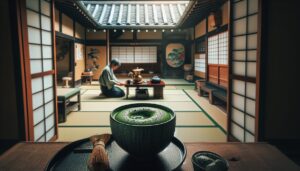

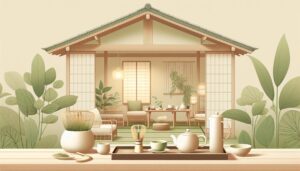
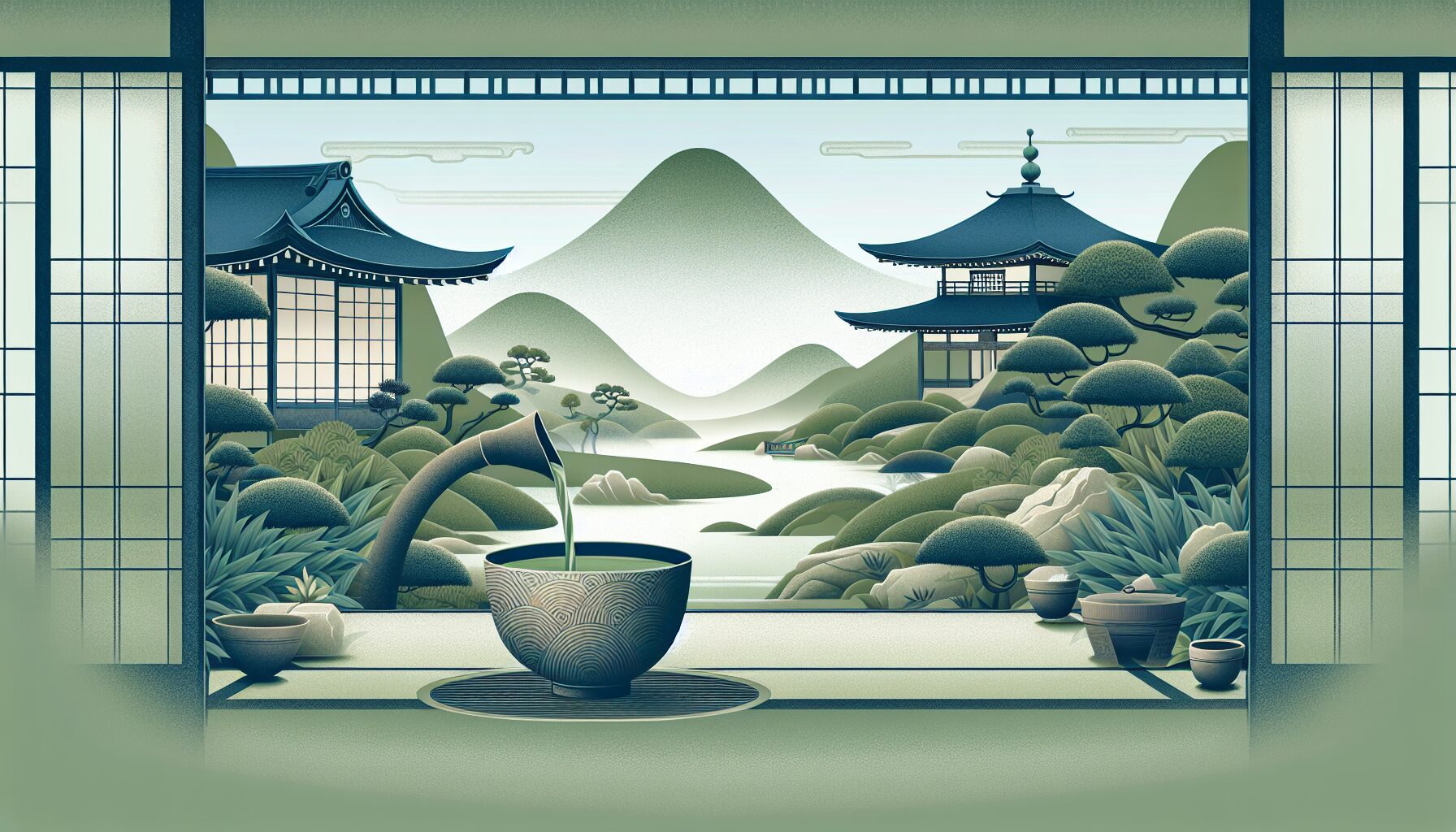

Comments